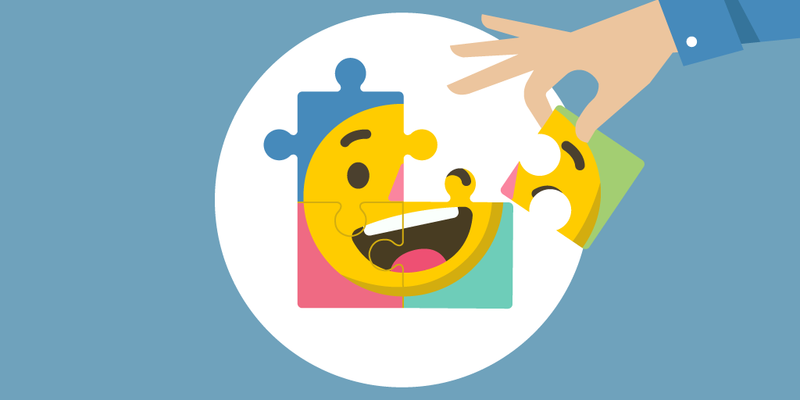Quick, what’s better than good customer service? Good customer service that’s been tailored to you, of course!
As the world around us evolves, so does the science of customer-servicology (totally not a made-up term). What worked great some five, ten years ago is just par for the course now. And “par for the course” isn’t a tagline that wins you new customers.
Personalized, individually tailored customer experience is a trend that heavily shapes the world of customer service. And to help you navigate this brave new world, here are 4 knows of tailored customer service.
Value of Personal Customer Service
Customer service is the new marketing.
— Derek Sivers, Founder CD Baby
Since we’ve kicked things off with one school essay cliché — a ready-made quote opener — why not continue with another cliché: a broad open-ended question to start the conversation?
So without further ado: How is personal customer service better than just customer service?
Customer service landscape is changing, but only because the demographic landscape is changing too. As more, younger generations join the customer base
When it comes to Generation Z (those born from mid-90s to 2000s), personalized experiences are necessity and not luxury. Gen Zers expect almost instantaneous interactions that are entertaining and tailored to them.
As time goes, older generations take up Gen Z’s position on customer experience: 75% of customers will want to shop with businesses that offer personalized experiences by 2020.
As of this writing, 2020 is only two years away, so that’s less looking into the far future and more preparing for what’s just around the corner. If you don’t want to get caught with your metaphorical pants down in 2020, personalized customer-tailored experience is something you need to wager on.
Hopefully, we’ve made our case here. Now, let’s sink our teeth into the chewy part of this article — 4 knows of tailored customer service.
4 Knows of Tailored Customer Service
1. Know Your Product

This one should go without saying, and that’s why we put it as number one on this list. Product knowledge is a key ingredient in the personalized customer service recipe.
Even if what you offer is purely services, you have to think of them as a product — something that is aimed specifically to be sold to customers. So whatever it is that you offer, you need to learn in intimate, borderline pornographic detail.
Learning a set of basic questions (what does your product do, how much does it cost, etc.) will get you nowhere, though. Don’t get us wrong, knowing the ropes is a step in the right direction — but it’s only one step.
How long until a customer needs to give your product a facelift? Will future models come at a discounted price for owners of previous models? Can your product be integrated with [insert whichever other product you can think of]?
Whenever a customer has some off-the-wall questions that require some off-the-cuff thinking on your part, you’re still expect to give a quick answer. And if you haven’t studied your product from every possible angle, that’s damn near impossible.
On the other hand, if you can answer even the weirdest questions out there — and you should never underestimate your customers’ capacity for weirdness — you appear as not only an expert but also a person who cares.
And care is something many customers are willing to give out the dough for. 55% of customers are willing to spend more money with a company that guarantees them a satisfying experience.
2. Know Your Customer

This headline sounds like a paraphrased zen wisdom: “If you want to know your customer, you must become a customer.”
The thing is, good customer knowledge is at least as important as good product knowledge. You need to make an effort to understand your customer and their history with you.
Relationships don’t build themselves, and it’s up to you to lay the foundation. Their preferred products/services, their history of purchases, their behavior, their channels of communication — all of it plays a crucial role in understanding what makes your customers tick.
Don’t afraid to actually be up close and personal, either.
Learn your customer’s name and try to use it as often as possible (without it getting ridiculous, of course). If the situation calls for it, mind your manners and start off with Mr/Mrs/Miss, but the key is to not appear impersonal.
The studies show that hearing your name activates several parts of your brain, making your senses heightened and mood more ecstatic.
Making your customers happy? Sure sounds like a plan!
3. Know How to Listen

When it comes to the questions of (not) listening to your customers, we’ve got it covered quite well already.
But it bears repeating: your two ears and friendly facial expression is your best weapon when dealing with customers. The hard part is that you have to actually listen to them and not merely pretend.
(That means turning off that Clash of Clans you’ve been playing.)
It can also be hard to make your customers open up and share information. However, majority aren’t above giving you the deets when prompted: 56% of customers don’t mind sharing their personal information in exchange for better service.
Not every customer will be as eloquent or as calm as you’d like. Some customers are, unfortunately, prone to fits of anger, initiating shouting matches, and talking down to you.
Unless directly threatened, you need to keep your composure no matter what, even if you have to grit your teeth. Speaking of teeth, don’t underestimate the power of showing all 32 of your bright whites.
Here’s the thing: smile in customer service is practically mandatory at this point, at least in the West. Through some weird evolutionary developments, what served as a sign of aggression for chimps and gorillas became a sign of friendliness for us humans.
A Chinese proverb says, "A man without a smiling face must not open a shop." There’s no better recap than this.
4. Know How to Talk

We get it, talking is hard — unless you’re talking to a literal brick wall (even then, there can be exceptions).
Let’s say you’ve just woken up from coma, having retained language skills but forgotten how to be polite. For your sake, here’s a Talking to Your Customers crash course.
First things first, introduce yourself. And by introducing, we don’t mean just one sentence of “Hi, I’m so-and-so, let’s get to business”.
If you’re talking online, have a photo of yourself. It doesn’t have to be your usual “guy in a suit smiling at a camera”; in fact, an informal photo will do. The point is to show that your customer is talking to a human being and not an android.
Set up the rules of this conversation: whether you’re on the first-name basis, how should a customer address you, etc.
Secondly, use positive language. An alternative to dismissively saying “you shouldn’t” is saying “why don’t you try this instead?” Do not be condescending and never assume your customers are less intelligent than you.
Thirdly, be quick about it. Customer service exists in a world of cowboys of Indians, where a guy with the quickest draw wins: 78% of customers who complain to a brand on Twitter expect a response within an hour.
Lastly, depending on the context and the person you’re talking to, you can mix it up. For example, there is an argument for using emojis when talking to a customer online. When used in moderation, emoticons can elicit a friendly tone.
There’s a difficult line for you to ride: be polite but not too formal, friendly but not too in-your-face, positive but not too cheesy.
Service that is tailored to your customers is, no doubt, a difficult proposition. But now, armed with 4 knows of tailored customer service and equipped with the right tools, there's nothing stopping you from giving your customers the service they really wanted.
Qminder is a great customer service tool that you can use to improve the experience right now. Simply sign in for a free trial and see the difference for yourself.
Before you know it, you'll be the one providing the tailored customer service.






